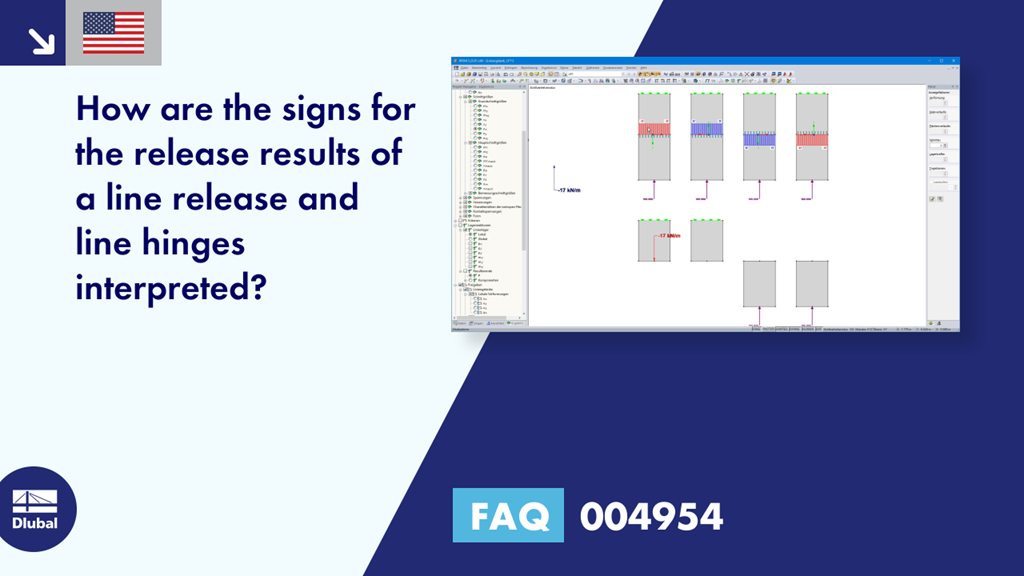Question:
How are the signs for the release results of a line release and line hinges interpreted?
Answer:
A line hinge is nothing more than a line release where an object is released. In the case of a line release, a surface is released; in the case of a line hinge, this is defined on the line of a surface. Therefore, the released surface is the surface on which the line hinge was defined.
The forces always act on the original surface; that is, on the non-released surface. In the case of line hinges, this means that the forces act on the surface without a line hinge.
Now, it is necessary to clarify the sign conventions; that is, in which direction the force acts on the surface. For this, it is necessary to know the local x-axis of the lines as well as the local z-axis of the surface. The internal line hinge coordinate system is to be understood as follows:
The axis x' points in the direction of the local x-axis of the line.
The axis z' is the normal to the surface on which the line hinge was defined.
The axis y' is the tangent to the surface plane, and results from the "right-hand rule".
For the example shown in Image 01, this means the following:
Example 1
The x-axis of the line runs to the right.
The z-axis of the surface is oriented downwards⇒ The y' axis of the line hinge is oriented away from the original surface (= a surface without a line hinge). Since the value is displayed with a negative sign, the force acts in the direction of the original surface.
Example 2
The x-axis of the line runs to the left.
The z-axis of the surface is oriented downwards⇒ The y' axis of the line hinge is oriented towards the original surface (= a surface without a line hinge). Since the value is displayed with a positive sign, the force acts in the direction of the original surface.
Example 3
The x-axis of the line runs to the right.
The z-axis of the surface is oriented downwards⇒ The y' axis of the line hinge is oriented towards the original surface (= a surface without a line hinge). Since the resulting value is displayed with a positive sign, the force acts in the direction of the original surface because Actio = Reactio.
Example 1
The x-axis of the line runs to the left.
The z-axis of the surface is oriented downwards⇒ The y' axis of the line hinge is oriented away from the original surface (= a surface without a line hinge). Since the resulting value is displayed with a negative sign, the force acts in the direction of the original surface because Actio = Reactio.
In contrast to the line releases, the axis system cannot be displayed for the line hinges. For the example shown in the image, we recommended not arranging the line hinge on the surface on which the result is to be related, and orienting the x-axis of the line in such a way that its y-axis is oriented in the direction of the desired surface. For this, the coordinate system of the line applies.
